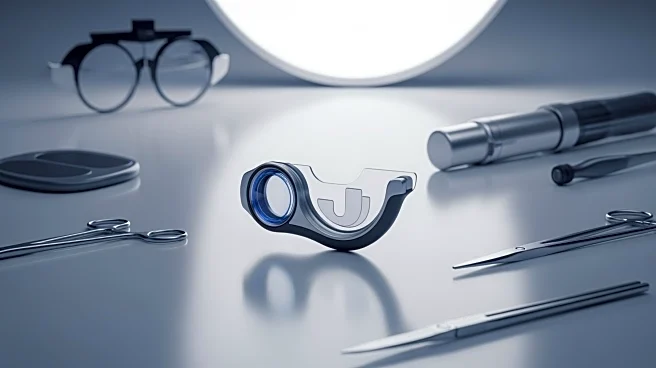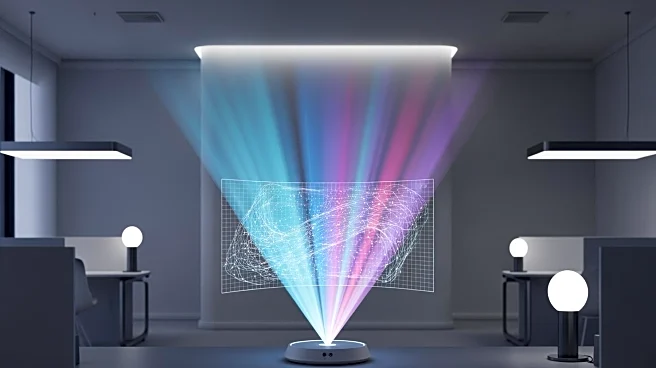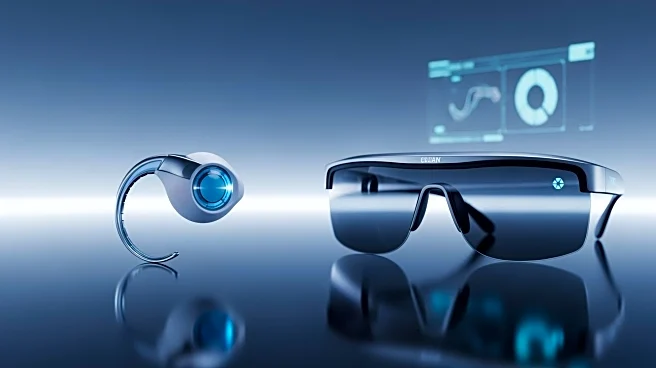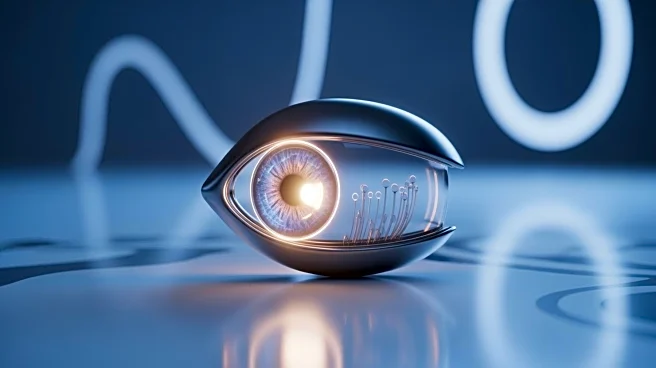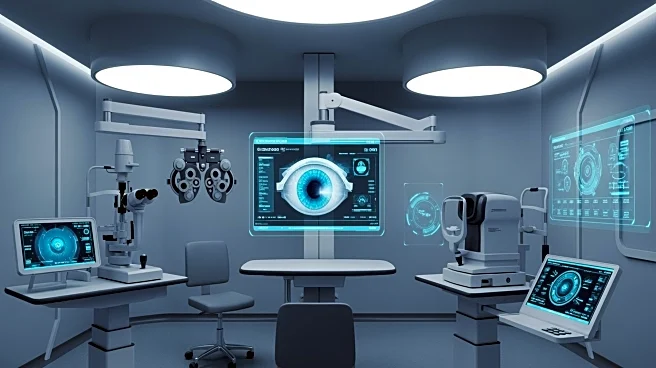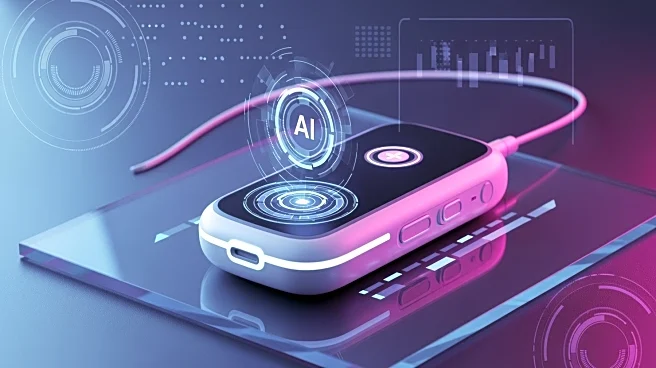What's Happening?
Researchers from University College London and Moorfields Eye Hospital have announced promising results from a trial involving a new device designed to help blind individuals regain the ability to read.
The device, known as the Prima, is a wireless subretinal photovoltaic implant that works in conjunction with augmented-reality glasses. Developed by Science Corporation, the implant is a small electronic chip that is surgically placed under the retina. The glasses project near-infrared light onto the implant, which functions like a solar panel, converting the light into electrical signals. These signals are processed by artificial intelligence algorithms and transmitted to the brain, allowing patients to perceive visual information. In a recent trial, 84% of participants, who had lost their sight due to geographic atrophy with dry age-related macular degeneration, were able to read letters, numbers, and words using this prosthetic vision.
Why It's Important?
The development of the Prima device represents a significant advancement in the field of neural engineering and offers hope to millions of individuals affected by untreatable progressive eye conditions. Geographic atrophy, a leading cause of vision loss, currently has no available treatment, impacting approximately 5 million people worldwide. The success of this trial could pave the way for market approval, providing a new avenue for restoring vision and improving the quality of life for those affected by such conditions. The integration of AI in processing visual information highlights the potential for technology to address complex medical challenges, potentially transforming the landscape of vision restoration therapies.
What's Next?
Following the successful trial, the next steps involve seeking regulatory approval for the Prima device, which could lead to its availability in the market. This process will likely involve further clinical trials to ensure safety and efficacy on a larger scale. Additionally, the rehabilitation program required for patients to interpret the visual signals will need to be refined and standardized. Stakeholders, including healthcare providers and insurance companies, may need to consider the implications of integrating such advanced technology into standard care practices. The potential market introduction of the Prima device could also stimulate further research and development in the field of brain-computer interfaces and neural engineering.
